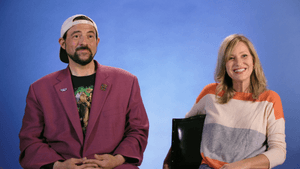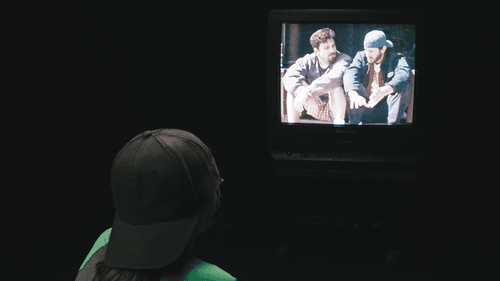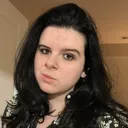Stay in the Loop
BSR publishes on a weekly schedule, with an email newsletter every Wednesday and Thursday morning. There’s no paywall, and subscribing is always free.
Exploring love, queerness, and becoming yourself through the lens of late 1990s favorite Chasing Amy
Multiple truths: A conversation with Chasing Chasing Amy filmmaker Sav Rodgers

On April 4, 1997, Kevin Smith’s Chasing Amy hit theaters. The script draws from Smith’s real-life romantic relationship with lead actor Joey Lauren Adams, as well as his friend (and later co-producer) Scott Mosier’s “romantic friendship” with Go Fish producer Guinevere Turner. Smith and Mosier met Turner at the 1994 Sundance Film Festival.
However, over the years, the film was not without controversy for its LGBTQ+ representation. The 2023 documentary Chasing Chasing Amy examines the complex and often divisive impact of Chasing Amy within the queer community. BSR contributor (and genderfluid love child of the Jersey Shore) Adryan Corcione sat down with Chasing Chasing Amy filmmaker Sav Rodgers to discuss the film’s legacy in honor of its 28th anniversary.
Adryan Corcione: Prior to making Chasing Chasing Amy, how did you respond to others’ criticism of Chasing Amy?
Sav Rodgers: I was terrible at being closeted for a number of reasons [including] telling people Chasing Amy was my favorite movie. As a kid, not many people had seen Chasing Amy, but they could Google it.
In college, I started to have conversations about [the film]. I realized that there was a dissonance between my experience with Chasing Amy versus other queer people's. Because so much of my identity was etched by how this movie influenced me, I probably took [criticism] a lot more personally than I did by the time that we had started making the documentary; I surrendered that I’d approach the conversation recognizing that there's a lot of different experiences with the film, rather than having a perspective of defensiveness. I was just curious about how this one film had so many different responses and that's what I was really fascinated by.

AC: When did you learn about the Go Fish lore—about Turner’s “romantic friendship” with Mosier—and did that change how you saw the film?
SR: Unearthing the romantic friendship between Scott and Guinevere that inspired Chasing Amy was something that I learned as an adult. As a child watching Chasing Amy, I was watching it in the vacuum of my own experience. I was imposing my own hopes and dreams onto it. I once had a conversation with Kevin where I was explaining all of the things that Chasing Amy made me feel as a kid and he was like, “Man, where is that movie?” The diversity of experiences and reactions that we can have to a single film, you can have about a ton of different types of movies.
AC: Given that Chasing Amy has been both praised and critiqued for its portrayal of queer identities, how does your documentary engage with Smith’s perspective while also addressing the film’s lasting impact on LGBTQ+ fans?
SR: Chasing Chasing Amy is an endeavor to engage with multiple truths. We take Kevin's perspective on his story just as seriously as we take critiques of it. There is the reception to Kevin telling his story because it utilizes LGBTQ characters, so, obviously, the LGBTQ community is going to have opinions. Those opinions are not monolithic; there are just as many who were similarly inspired by Chasing Amy as I was, as there were who had negative reactions.
For instance, we had a scholar of bisexuality studies, Dr. Sarah Jen, explore the nuances of Chasing Amy as a bisexual film. We tried to hold space for everybody to share their truth. That's what makes cinema so fascinating. You have the subjective emotional experiences that you can impose upon a work of art because you're watching a film from your perspective or you were trying to walk in somebody else's shoes for the duration of the film. Chasing Amy is a perfect showcase of the difference between viewers watching a single work of art.
AC: You two had a difficult conversation with Joey Lauren Adams—that her experience was negative, particularly in reenacting painful relationship memories on screen and the larger dynamic of being a woman in Hollywood. How did that feel?
SR: I'm grateful to Joey for being willing to engage with me. There is always a human cost to the art we consume. It was a sobering reminder that although Chasing Amy meant something special to me as a 12-year-old who really needed that film, there's a different experience sometimes when you're making a work of art, and how that legacy continues to endure and change for the people who actually made it.
AC: Since Smith and Adams’s relationship fell apart after Chasing Amy was released, did you have any reservations about bringing in your own romantic relationship into the doc?
SR: I had so many reservations about being in [the doc] at all, let alone depicting the most cherished important relationship that I will ever have in my life. People ask me all the time if I planned on being in [the doc] from the beginning and the answer is no.

[People] would rightfully point out to me: “Well, you just told me this beautiful story of what this film did for you and it could be an emotional anchor.” By the time we started filming, I conceded to being in it, but not for more than 15 minutes. However, I knew that I was gonna need to be in it more because of the moments that I had with Kevin, Guinevere, and Joey, but I didn’t know the film was going to be about my journey. I wasn't planning on documenting my transition. I wasn't planning on making the film about my coming-of-age, both as a 12-year-old and then as a 24-year-old. It was a persistent fear that I had of sharing the most important part of my life with an audience and effectively asking to be critiqued and judged as people are trained to do when they watch any kind of film.
For [my wife] Riley, she enjoys that kind of attention in a way that I don't. She had no reservations about being on camera.
I’m grateful for the way that people have received our film and opened themselves up, even if they're not the target audience for Chasing Chasing Amy—to go on a deeply empathetic emotional journey of what it means to become yourself, to fall in love, and to know that you exist.
Chasing Chasing Amy is available to buy or rent on Amazon, YouTube, and other major streaming services. It is also available on Hoopla, where Free Library of Philadelphia members can stream the film for free.
Sign up for our newsletter
All of the week's new articles, all in one place. Sign up for the free weekly BSR newsletters, and don't miss a conversation.
 Adryan Corcione
Adryan Corcione